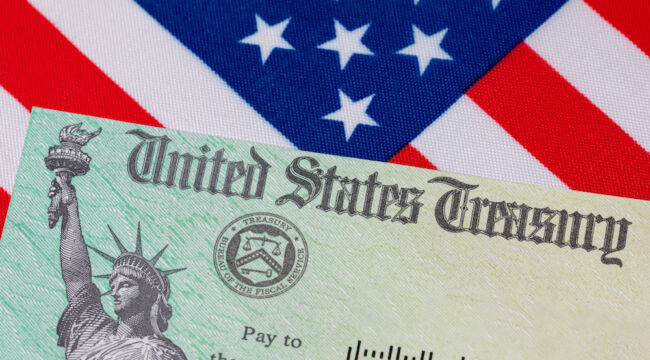A “Massive Welfare Economy”
First the silver lining:
Second-quarter GDP did not collapse at the predicted 34.7% annualized rate.
Now the cloud:
Second-quarter GDP nonetheless collapsed at a calamitous 32.9% annualized rate.
Into the record book it goes — Q2 2020 turned in the severest quarterly plummeting in United States history.
Q2 1921 formerly claimed that inglorious distinction… nearly one century ago.
And so the United States economy officially enters recession — two consecutive quarters of contraction, as the standard definition runs.
Here is the butcher’s bill from the second quarter:
Personal consumption — down 34.6%, annualized…
Services — travel, tourism, restaurants, etc. — down 43.5%…
Business investment — down 37.7%…
New housing — down 38.7%…
Exports — down 64%…
Federal government spending — from a reduced tax base — up 17%.
This government spending spree in fact presents us with a deep and profound curiosity:
In a quarter of record GDP contraction… and record unemployment… disposable personal income skyshot 42.1%, again annualized.
Imagine it if you can: a fellow loses his job and his wallet fattens.
It is as if he stops eating and gains 30 pounds. Who ever heard of it?
Thus the United States presently runs a “massive welfare economy.”
Mr. Joel Naroff, he of the eponymous Naroff Economic Advisers:
“The only way you have personal income rising in a collapsing economy is if you turn to a massive welfare economy.”
Mr. Naroff estimates the Q2 plunge “might have been 50% or more” absent the government crutch.
But the crutch is presently being kicked away from many Americans. And their income is about to become far less disposable…
The Federal Pandemic Unemployment Compensation program concludes tomorrow. And millions of Americans will be thrown from the dole.
How will they eat? Purchase medicine? Make rent?
Rents come due this weekend, in fact. Absent the $600 weekly lifeline… how will they meet it?
29 million Americans could face eviction by year’s end, claims a bunch called the COVID-19 Eviction Defense Project.
Meantime, the Census Bureau’s latest weekly Household Pulse Survey is out.
23.9 million Americans, the survey revealed, had “sometimes not enough to eat.”
And so the angels sob.
The two parties at Washington have not yet agreed on a benefit extension.
Fortunately for the workless and sometimes-starved… it is an election year.
And neither party wants 29 million sometimes-starved, unmedicated evictees on its quaking hands.
But when agreement is reached, the government will have to expand the relief rolls…
Fresh unemployment claims increased to 1.43 million last week — the 19th consecutive week in which claims exceeded one million — crushing all existing records.
Not even the professional optimists can bellow about a V-shaped recovery any longer.
What do say the “experts” about today’s GDP issuance?
[It] “just highlights how deep and dark the hole is that the economy cratered into in Q2,” says Mr. Mark Zandi, chief economist at Moody’s Analytics.
“It’s a very deep and dark hole and we’re coming out of it,” he continues, “but it’s going to take a long time to get out.”
Jefferies economist Aneta Markowska peers into the same deep, dark abyss:
The only value in Q2 GDP data — which are obviously very backward looking — is that now we know how big of a hole we have to dig ourselves out of…
Even if growth averages 5% going forward, it will take 2 years to get back to pre-COVID levels… And, because of the continued growth in the underlying capacity of the U.S. economy — due to population and productivity growth — it will take even longer to get back to pre-COVID trend and full employment. Our best guess is 4 years.
You can therefore expect a full economic recovery… when Joe Biden’s vice-presidential pick is running for her second term in office.
But what about the third quarter? Can you expect a jolly bounce off Q2 lows?
After all, GDP cannot possibly match Q2’s abysmal record.
Yet you should not expect a dramatic Q3 rebound, argues Joseph Brusuelas, chief economist at RSM:
That premature reopening simply pulled forward activity and resulted in the release of one-time pent-up demand that exhausted itself on or around June 24. The probability of a greater than 20% rebound in the current quarter has declined significantly over the past month, and we think it will not materialize.
We hazard they are correct. And so the Federal Reserve will remain at its tricks…
Yesterday Jerome Powell insisted it will do “whatever it can for as long as it takes.”
More QE. More manipulation. More debasement. “For as long as it takes.”
The beatings will continue until morale improves, that is.
And we do not expect morale to improve anytime soon…
Regards,
Brian Maher
Managing editor, The Daily Reckoning



Comments: